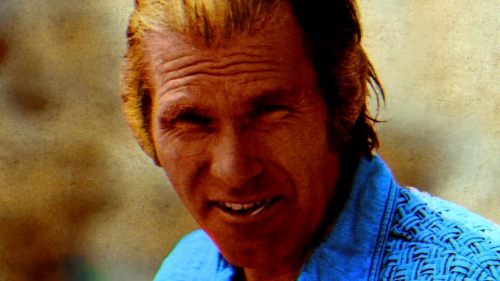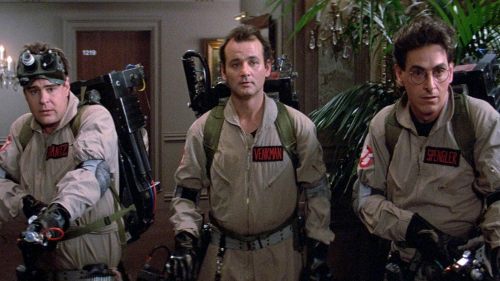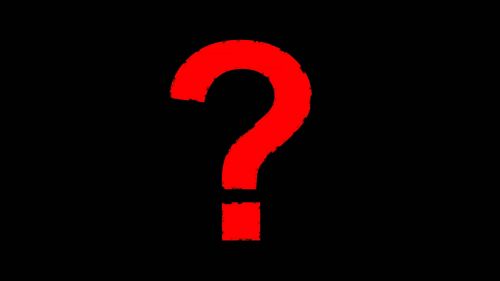Collins’ Crypt: Entering The HOLLYWOOD HORROR HOUSE
Real life friends and anyone who follows me on my social media channels know that I am a jigsaw puzzle enthusiast, going back long before quarantine turned everyone into a fan of the activity (welcome! Now stop leaving me empty-handed at Target!). In addition to just being something I've enjoyed since I was a child, it's also a nice way to tune out and feel that I fully accomplished something, as there's just the one goal and while some are more challenging than others, I know some time/patience will be enough for me to succeed. Contrast to a video game, where it nags at me when I discover down the road that I missed out on big side quests or optional bosses, or that I may be forever stuck on DARK SOULS because I simply cannot react fast enough to overcome a particular challenge (eat shit, Smough and Ornstein!). Anyone can finish a puzzle!
So it makes sense in a way that I enjoy filling in the gaps of my horror history, especially when it comes to the development of the slasher film. This week marks the 40th anniversary of FRIDAY THE 13TH, and while other films are often credited with being the "first" slasher (HALLOWEEN and BLACK CHRISTMAS among them, and you don't have to argue if you consider a different one to be the true grandfather of them all, that's a sub-point of the article), I honestly lean toward saying that it was really the one that finally cemented the basics once and for all, with every one of them since owing just as much - and possibly more - of a debt to Sean Cunningham as John Carpenter. The body count (double HALLOWEEN's), the blood and effects, the "whodunit" angle that has over time become more prominent than the named boogeyman of HALLOWEEN (and certainly more common than the still unsolved mystery of BLACK CHRISTMAS)... in its attempts to match/top Michael Myers' relatively quiet killing spree, best buds Sean Cunningham and Victor Miller's revised template proved to be the one imitators would more closely match.
Instead, while it's certainly a better film (and my personal favorite), lately I see HALLOWEEN as another of the building blocks for what became the slasher film as we know and love it, introducing or perfecting a number of elements but - particularly in retrospect - not quite hitting all those common checkmarks (hell, Laurie smokes pot! That's a huge no-no for a Final Girl!). But still, it's the older "proto-slashers" that are a true joy to discover, especially when you find one that can rightfully claim to have done something first when it's often attributed to a later film. It's always fun to see someone say something like "HALLOWEEN-style shots from the killer's POV", only to be corrected by someone saying "Well BLACK CHRISTMAS did that first", at which point someone can then say "Well, PEEPING TOM beat them both to the punch..." - you get the idea.

Most of the big proto-slasher titles I've seen or at least have on my watchlist, but every now and then I am surprised to find another. Vinegar Syndrome recently unearthed HOLLYWOOD HORROR HOUSE (aka SAVAGE INTRUDER), which I had never even heard of, though I would prefer to chalk that up to its previously limited availability than my own ignorance (the only other disc release I could find was a cheapo Full Moon DVD in 2016 that was said to be bad even by their already low standards). The 1970 film, written and directed by Donald Wolfe (his lone feature) is commonly listed among the "Hagsploitation" films of the day due to the presence of two faded actresses from yesteryear, a sub-genre that more or less began with Bette Davis and Joan Crawford squaring off in 1962's WHAT EVER HAPPENED TO BABY JANE? and deserves its own article someday.
Here we get another of Davis' rivals: 1930s star Miriam Hopkins (a 1935 Best Actress nominee for BECKY SHARP), as well as Gale Sondergaard, who the following year was the recipient of the very first Best Supporting Actress Academy Award, for her work in ANTHONY ADVERSE. While Sondergaard's role is a completely fictional character (and legit acting performance for her), Hopkins was basically kind of playing herself here as Katharine Packard, a big star from the silent era who was looking to mount a comeback, just as HOLLYWOOD HORROR HOUSE itself provided her with her first leading role in quite a while, after a decade of mostly bit parts in movies and the occasional guest turn on television. Sondergaard plays her longtime assistant, Leslie, who is also the only one suspicious of Vic Valance, a new nurse/handyman/etc played by David Garfield (son of John). While Katharine and the other staff members are charmed or at least not threatened by the energy Vic brings to the house, Leslie feels something isn't right - but is it just jealousy due to Katharine having less need for her?
Well, no. He's a damned psycho, or should I say PSYCHO, as the film is clearly borrowing a bit from Hitchcock's masterpiece (shocking murder at the halfway point, check. An old lady in the window that isn't actually a living old lady, check.) as well as BABY JANE and some of the other "psycho-biddy" films that, like Hopkins' character, were already past their prime. But some of Katharine's delusions of returning to superstardom and attempts to woo Vic with affection and gifts - ultimately rather subdued in favor of housebound suspense scenes - also gives it a touch of SUNSET BOULEVARD, if William Holden was prone to chopping off Gloria Swanson's hands that is (incidentally, Swanson's character in that film was based on actress Norma Talmadge, who once lived at the estate that was chosen as Hopkins' home here). It also doesn't give much of a chance for Sondergaard to chew the scenery, keeping her somewhat in the background while the focus stays on Vic, which allows the slasher-y elements to stand out even more.

To be fair, the body count isn't huge, but an early scene (largely unrelated to the rest of the film) feels like something out of TOOLBOX MURDERS or HENRY, presented so matter of factly as Vic (in a disguise for some reason; once he's properly introduced there's never any attempt to hide that he's the murderer) follows a woman home and kills her as she sits at her dining table, with a news report telling us she's just the latest middle-aged woman to be killed and dismembered. Vic's oedipal-driven motive is clearly inspired by gialli of the day, but with a far less complicated plot than those Italian thrillers offered. There's no police involvement or convoluted blackmail schemes at play here - Vic's just crazy and happened to be on a tour bus (driven by fifth Stooge Joe Besser!) that drove by Katharine's house, switching his previously established MO on a dime. The randomness of it certainly recalls a few of the slasher films that would arrive ten or so years later (HOME SWEET HOME and FINAL EXAM come to mind), and the gruesome dismemberment is more reminiscent of Jason Voorhees than the usual Norman Bates wannabes of the day. And the film also opens on a grisly corpse laying in plain view in broad daylight, not unlike the famous opening shot of TEXAS CHAIN SAW MASSACRE, which would come along a few years later.
However, if you don't care at all about slasher history and are just lazily reading anything you can find today, the film will also be of interest to ONCE UPON A TIME IN HOLLYWOOD fans, as Rick Dalton's career was at a similar place as Hopkins/Packard's is presented here, and for good measure, Tarantino's period film was set around the same time that this one was actually shot (1969). The titles on the film play over footage of a decayed, crumbling Hollywood sign (not an effect or model - this was how the iconic sign really looked at the time until it was restored in 1978), clearly establishing the "old Hollywood is dying" theme that also plays a heavy part in Tarantino's film. And it wouldn't be a reach to suggest the tragic murders were on the mind (Vic's first proper appearance has him in Manson-y hippie garb) during production, as it was shot only a few months after they occurred in more or less the same part of town. A double feature of the two films would be quite interesting, I think.
Did Carpenter (or Bob Clark, or [name your preferred slasher originator director here]) see this film? Probably not, and even if they did it doesn't mean they actively thought about it when crafting their own. And certainly, films like THE HOUSE THAT SCREAMED (which was even more PSYCHO-influenced, but with chase scenes and a dorm full of potential victims) or 1972's SILENT NIGHT BLOODY NIGHT offer a more direct influence on what was to come. But it still deserves a spot on the watchlist of anyone tracking the entire possible cinematic history of what led to the definitive slasher films of the early 80s; a minor but undeservedly forgotten evolutionary step that brought us closer to the masked killers we all know and love. Vic Valance may not have the same street cred as Michael Myers or Ghostface, but he was helping pave the way for their dominance in the field, and now thanks to Vinegar Syndrome's (immaculately restored) disc, he can get his due.



